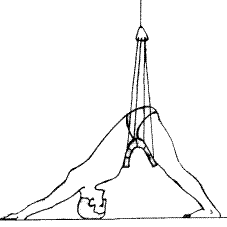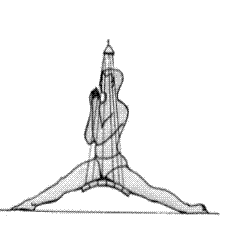|
Physical loads in yoga asanas are deternimed by body's weight, body's
parts weight (legs, arms, head) and space configuration of body and its
parts (pose). Roughly physical loads can be divided into 3 categories:
- forces acting on body and its parts (for example body's weight falling
on hands, arms and shoulders in hill pose or body's weight acting on
head and neck in headstand);
- moments of forces acting on some ligaments (for example stretching
perinium's muscles in splits);
- pressure (pressure= force/square) acting on separate region of body
(where body touchs the ground). Pressure's value has influence on convenience's
feeling.
When some forces, moments of forces or pressure exceed some critical
level (on that period of time) discomfort erises and higher state of mind
does not appear, because conscious rests in these parts where discomfort
or pain is located. Supporting of flexible board is capable to reduce
these loads to normal level and allows normal preformance of asana.
|





